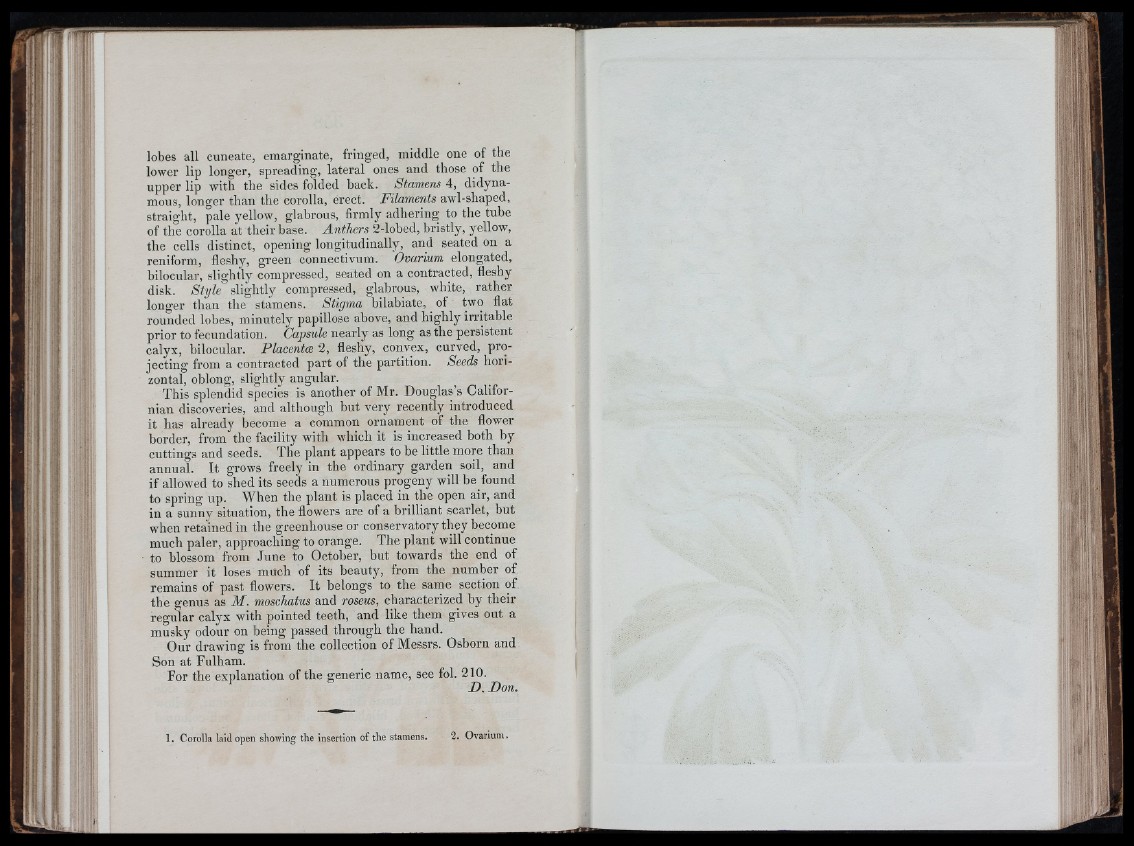
It; 1«
lobes all cuneate, emarginate, fringed, middle one of the
lower lip longer, spreading, lateral ones and those of the
upper lip with the sides folded back. Stamens 4, didynamous,
longer than the corolla, erect. Filaments awl-shaped,
straight, pale yellow, glabrous, firmly adhering to the tube
of the corolla at their base. Anthers 2-lobed, bristly, yellow,
the cells distinct, opening longitudinally, and seated on a
reniform, fleshy, green connectivum. Ovarium elongated,
bilocular, slightly compressed, seated on a contracted, fleshy
disk. Style slightly compressed, glabrous, white, rather
longer than the stamens. Stigma bilabiate, ^ of two flat
rounded lobes, minutely papillose above, and highly irritable
prior to fecundation. Capsule nearly as long as the persistent
calyx, bilocular. Placenta 2, fleshy, convex, curved, projecting
from a contracted part of the partition. Seeds horizontal,
oblong, slightly angular.
This splendid species is another of Mr. Douglas’s Californian
discoveries, and although but very recently introduced
it has already become a common ornament of the flower
border, from the facility with which it is increased both by
cuttings and seeds. The plant appears to be little more than
annual. It grows freely in the ordinary garden soil, and
if allowed to shed its seeds a numerous progeny will be found
to spring up. When the plant is placed in the open air, and
in a sunny situation, the flowers are of a brilliant scarlet, but
when retained in the greenhouse or conservatory they become
much paler, approaching to orange. The plant will continue
to blossom from June to October, but towards the end of
summer it loses much of its beauty, from the number of
remains of past flowers. It belongs to the same section of
the genus as M . mosckatus and roseus, characterized by their
regular calyx with pointed teeth, and like them gives out a
musky odour on being passed through the hand.
Our drawing is from the collection of Messrs. Osborn and
Son at Fulham.
For the explanation of the generic name, see fol. 210.
^ D . Don.
1. Corolla laid open showing the insertion of the stamens. 2. Ovarium. ■fJ